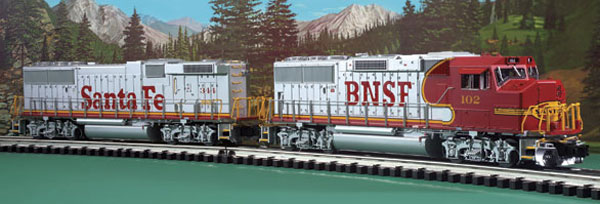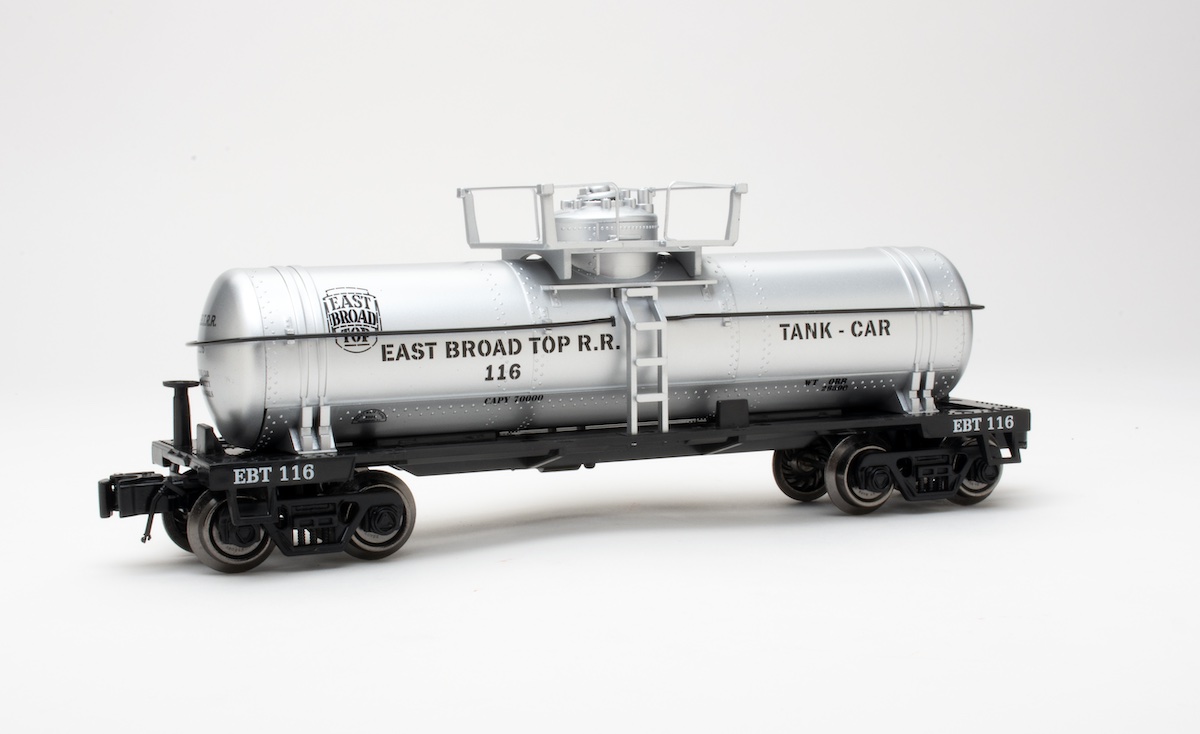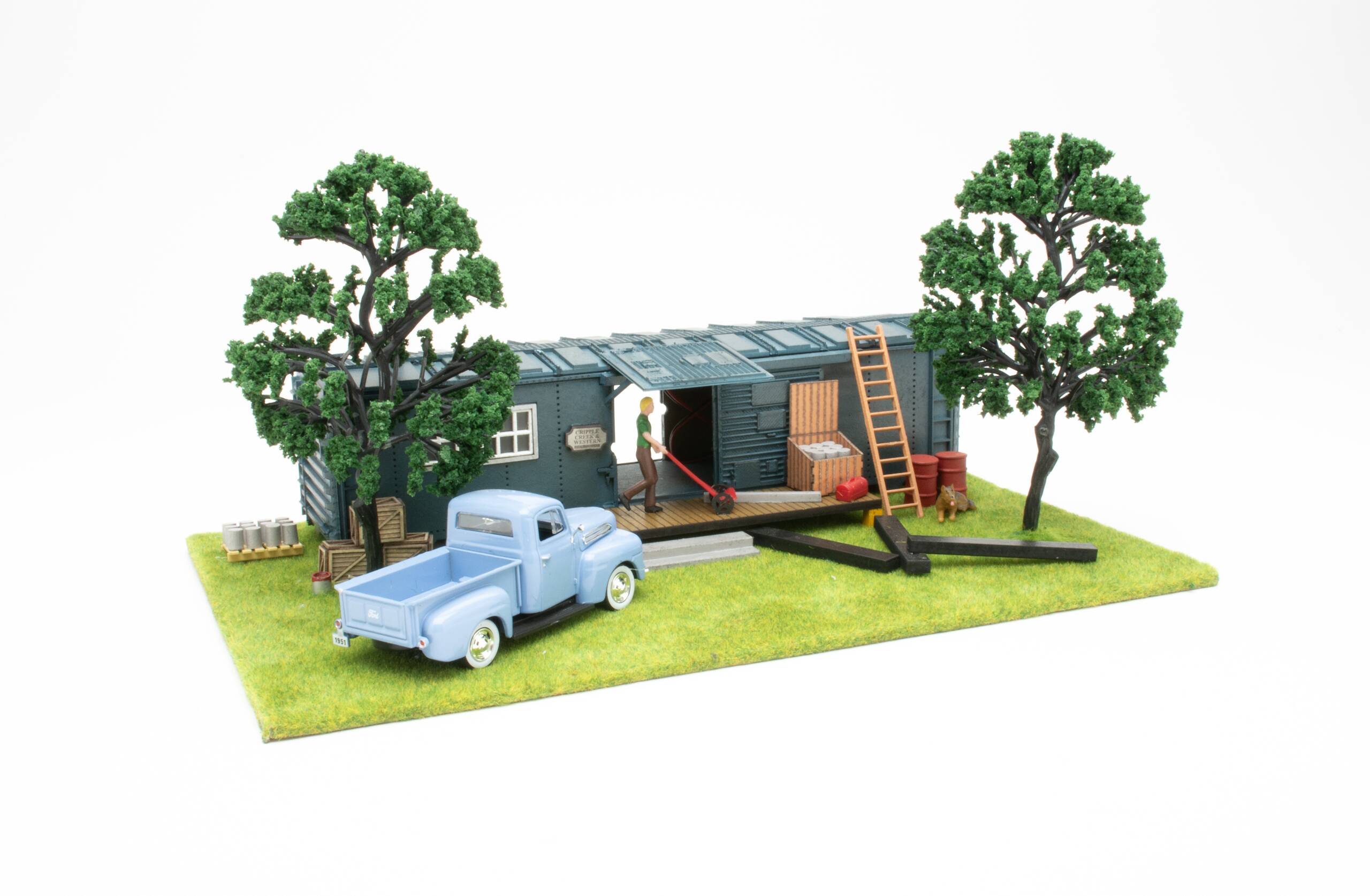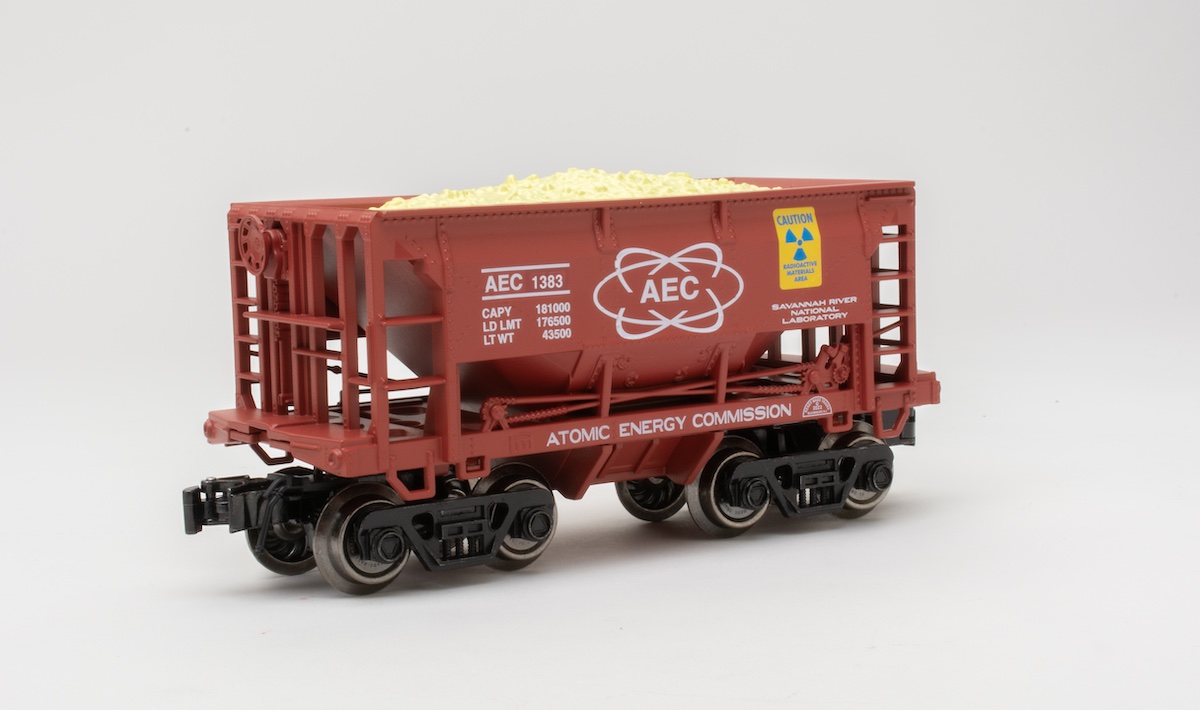Readers may recall how dazzled I was with Atlas O’s superb GP60, painted in Santa Fe’s blue-and-yellow freight scheme and reviewed in the May 2005 issue. Well, that issue was still warm from the printing presses when we received two more sturdy additions to the CTT locomotive test fleet: the powered Atlas O GP60M and the unpowered GP60B diesels.
In the real world, the GP60 comes in three different flavors. A conventional cab, such as the model we reviewed in May; a GP60M, with its wide-nose safety cab; and a cab-less GP60B. For real railroads, the wide-cab provides greater safety and comfort for the crew, while the B unit decreases purchase and maintenance costs, thanks to the lack of any cab or control equipment.
For the railfans, there’s also the satisfaction of being able to witness contemporary A-B-B-A sets rolling across the prairie. For modelers, the different versions of the GP60 provide a realistic means of expanding our fleets without creating an unrealistic grouping of modern locomotives.
The model

In a nutshell, this scale-sized Atlas O model has the same high level of detail as the conventional-cab GP60: crisp cast-in door, hinge, and hatch lines on the body shell; see-through grills on the dynamic brake blisters and in other areas; truck detail down to the level of brake-shoe actuators and sand tubes; and top-notch decoration.
Standout details on the M model include the multiple-unit lines that snake from the frame through an opening in the snowplow (especially visible in the red-and-silver paint scheme). There are a flurry of add-on grab irons on the nose and the rear of the shell. The large grab irons on either side of the nose hood are worth special note, as are the four add-on wiper arms affixed above the windshield frames.
The door on the diesel’s snout opens (it’s spring loaded), and the latch is a separately applied detail. Along the sides of the cab are separately applied rear-view mirrors.
Other fine details include 11 lift rings on top of the unit and see-through openings in the step plates on each end of the locomotive. Small nomenclature details, such as the “Sanitary water” lettering and the EMD builder’s plate, are clearly defined.
The GP60M, along with Atlas O’s conventional-cab version, squeezes every bit of scale detail into its 141/2-inch length, and then some.
The hood-style B unit is an oddity in modern railroad history. I still recall standing at the Penn Central’s Sharonville, Ohio, shop area years ago and examining a GP9B (still in Pennsylvania RR colors). It was one of the most exotic things I’d ever laid eyes on. I can say the same thing about the GP60B.
The booster model shares all of the plastic and metal details of the cab versions, but the model is far more than a cab unit with a plug inserted into the space of the absent cab.
Where the cab versions have full-length handrails running down both sides of the hood, the B unit accurately features a single full-length handrail on one side and interrupted handrails on the other side. The interrupted handrails bracket a traction-motor blower duct.
The Atlas O model features a key design modification made on the prototype GP60B to improve weight distribution. Peter Limas points out in his article “Santa Fe’s GP60 Fleet,” published in the November/December 2003 issue of Diesel Era, that the fuel tank of the B unit is shorter and offset to one end and the dynamic brakes (with their distinctive blister) are moved to the area that would have contained the cab.
Both ends of the B unit have a stack of add-on grab irons. As on the real thing, the engine numbers are painted on, rather than using illuminated number boards.
Decoration of both cab and B units is excellent. The nose of the cab unit features the famous Santa Fe logo, masterfully applied. There is no interruption as it crosses grab rails and the opening door. Truly outstanding work!
Our sample B unit came painted for Santa Fe (with the BNSF logo on its tail end and below the road numbers), while the cab unit was decorated for BNSF. Both models have been produced undecorated, and in Santa Fe (classic), BNSF (transitional), and BNSF (Heritage) paint schemes. Atlas O has also announced new road numbers for the Santa Fe and BNSF paint schemes, and the cab and booster units are available powered or unpowered.
On the test track
These Atlas O models operate on O-36 or wider track.
The powered cab model we examined is equipped with Lionel’s TrainMaster and RailSounds systems, as well as Train America’s Engineer On Board speed control and a smoke unit. All systems, including the coil couplers, functioned properly, and the sound package offers a first-rate roar of the diesel.
The cab unit features oscillating ditch lights, and the unpowered B unit we examined comes with coil couplers, center-rail pickup rollers, and a wiring harness should you wish to add an aftermarket TMCC receiver board to utilize the couplers in command-control mode.
It has been a while since I saluted the authors of an operator’s manual, but the Atlas O folks get a tip of the hat from me. Sometimes figuring out how to remove a diesel locomotive’s shell can be quite a mystery. The screw-removal steps are usually the easiest, but often things won’t budge. To make removal easier, there are three photos in the operator’s manual of the handrails on the M and B units that you need to disengage from the plastic shell.
It is also worth noting that the spot for the 9-volt RailSounds battery in the cab unit is located under the dynamic-brake housing (tabs hold the housing in place), and smoke fluid is added by pouring the elixir into the diesel-exhaust stack. Smoke unit, speed control, TMCC programming, and sound on/off and volume controls are on the frame of the powered unit next to the front truck.
Our performance numbers were very good. The speed range varied from 3.4 scale mph to 79 scale mph. Drawbar pull for the 5-pound 2-ounce powered unit was 2 pounds 7 ounces – typically excellent Atlas O results.
If you climbed on board the Atlas O intermodal express with the conventional-cab GP60, you’ll want to consider the possibility of expanding your fleet with these two superb products.













